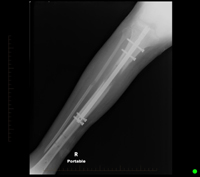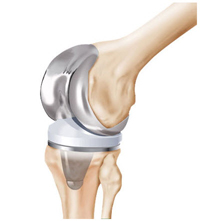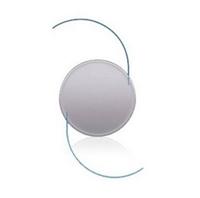The Eleven Most
Implanted Medical Devices In America
 5. Metal Screws, Pins, Plates,
and Rods (Traumatic Fracture Repair) 5. Metal Screws, Pins, Plates,
and Rods (Traumatic Fracture Repair)
Bone fractures are one of the
most common injuries, occurring in all age groups for a multitude of reasons. Of
over one million fractures that are admitted to the hospital every year, roughly
half require surgical intervention to realign and stabilize the bone, a
procedure called open reduction and internal fixation. This procedure occurs on
almost every bone in the body, from tiny carpals in the wrist secured with
plates no more than half an inch long, to femurs (the largest bone in the body)
requiring foot-long rods, screws and pins to hold the bone together. While the
techniques and implants needed to perform these surgeries on the different sites
of the body vary widely, the provider of those implant materials usually does
not.
 4. Artificial Knees 4. Artificial Knees
As the other major, replaceable
weight bearing joints in the leg, knees frequently wear down faster and in a
more disabling fashion than other joints. The constant friction and shifting of
weight in the joint leads to a breakdown of cartilage and bone, making knees the
most frequently replaced joint in the body. Over 90% of total knee replacements
lead to a reduction or elimination of pain and an increase in mobility. Over the
long-term, there is a 10% failure rate (need for re-replacement) after 10 years,
and a 20% failure rate after 20 years.
 3. Coronary Stents 3. Coronary Stents
Coronary stents are small tubes,
usually coated with a drug (drug-eluting stents), that are placed into the
arteries that supply blood to the heart. Stents are regularly implanted into
patients with unstable angina (unpredictable chest pain) and recent heart attack
patients whose coronary arteries have been partially blocked by atherosclerotic
lesions (cholesterol). Complications from stents include stent thrombosis
(clots), stent fracture, and re-occlusion (blood-vessel blockage). However, the
risks of these complications are hard to quantify when overall decrease in death
and disability is taken into account.
 2. Ear Tubes (Tympanostomy Tubes) 2. Ear Tubes (Tympanostomy Tubes)
Otitis Media, or middle ear
infection, is one of the most frequently diagnosed childhood diseases with at
least 80% of pre-school aged children affected. Billions of dollars are spent
every year on doctor visits, medicines, and, in chronic cases, surgery. In
contrast to the rise in numbers, multiple long-term studies have concluded that
as many as a third of these procedures are unnecessary. The surgery itself,
known as myringotomy and tube placement, is the most commonly performed
pediatric operation. Itís very safe, very quick, and has very low complication
rates. Due to the incredibly low cost of the tubes, and the fact that they have
been evolving for well over 50 years, no one manufacturer appears to dominate
the market.
 1. Artificial Eye Lenses (Psuedophakos) 1. Artificial Eye Lenses (Psuedophakos)
Cataracts are a problem faced by
millions of elderly Americans yearly, many of whom will require surgical
replacement of their own lens with an artificial one, known as a psuedophakos or
intra-ocular lens. These lenses come in many configurations, such as
single-focus (like glasses for distance vision), multi-focal lenses (like
bifocal glasses), and hi-tech variable-focus lenses (like real eyes). While the
vast majority of cataract surgery is safe and effective, there is a 1%-2% chance
of retinal detachment over the rest of the patientís lifetime. If this occurs
and is not treated promptly, patients can completely lose their vision in the
effected eye. While researchers are examining nonsurgical treatments for
cataracts, surgery is currently the only real treatment or cure.
(Ref:
http://www.247wallst.com/healthcare-economy/)
|
|

